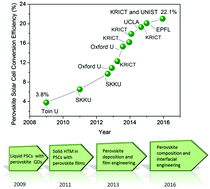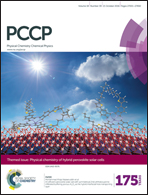Strategic improvement of the long-term stability of perovskite materials and perovskite solar cells
Abstract
Perovskite solar cells (PSCs) have gained tremendous research interest in recent several years. To date the power conversion efficiency (PCE) of PSCs has been increased from 3.8% to over 22.1%, showing that they have a promising future as a renewable energy resource to compete with conventional silicon solar cells. However, a crucial challenge of PSCs currently is that perovskite materials and PSCs have limitations of easy degradation and inferior long-term stabilities, thus hampering their future commercial applications. In this review, the degradation mechanisms for instable perovskite materials and their corresponding solar cells are discussed. The stability study of perovskite materials and PSCs from the aspect of experimental tests and theoretical calculations is reviewed. The strategies for enhancing the stability of perovskite materials and PSCs are summarized from the viewpoints of perovskite material engineering, substituted organic and inorganic materials for hole transportation, alternative electrodes comprising mainly carbon and its relevant composites, interfacial modification, novel device structure construction and encapsulation, etc. Various approaches and outlooks on the future direction of perovskite materials and PSCs are highlighted. This review is expected to provide helpful insights for further enhancing the stability of perovskite materials and PSCs in this exciting field.

- This article is part of the themed collections: PCCP Perspectives and Physical chemistry of hybrid perovskite solar cells


 Please wait while we load your content...
Please wait while we load your content...